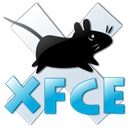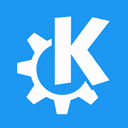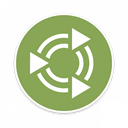Top Moksha Alternatives for Your Linux Desktop
Moksha, a fork of the venerable Enlightenment version 17 (E17), serves as the primary desktop environment for Bodhi Linux. While Moksha offers a unique and highly customizable experience, its specific dependencies and distinct approach might lead users to seek out other desktop environments. Whether you're looking for something lighter, more feature-rich, or simply a different aesthetic, exploring a strong Moksha alternative is a great idea.
Excellent Moksha Alternatives
If you're ready to venture beyond Moksha, a wide array of excellent desktop environments await. Each offers its own strengths, catering to diverse user preferences and system requirements. Here are some of the best alternatives to Moksha:

Xfce
Xfce is a free and open-source desktop environment renowned for its lightweight nature and modular design. Available for Linux and BSD, it aims to be fast and resource-friendly, making it an excellent Moksha alternative for older hardware or users prioritizing performance.

GNOME
GNOME 3 offers an easy, elegant, and modern way to use your computer. This free and open-source desktop environment for Linux and BSD is highly extensible with plugins and extensions, providing optimal performance and a polished user experience that contrasts with Moksha's more traditional feel.

KDE Plasma
KDE Plasma is a highly customizable and feature-rich cross-device work environment from the KDE Community. This free and open-source desktop for Linux, BSD, and postmarketOS emphasizes user control, offering blurry transparency, full-text search, and excellent extensibility, making it a powerful Moksha alternative for those who love customization.

Cinnamon
Cinnamon is a free and open-source Linux desktop environment known for providing advanced, innovative features alongside a traditional user experience, similar to classic Windows or GNOME 2 layouts. Its familiar interface makes it a welcoming Moksha alternative for users seeking a more conventional desktop.

MATE
MATE is a free and open-source fork of the classic GNOME 2 desktop environment, created for users who preferred its familiar interface over GNOME 3. Available for Linux, BSD, and more, MATE offers a traditional desktop experience that could be an ideal Moksha alternative for those nostalgic for older desktop paradigms.

LXDE
The "Lightweight X11 Desktop Environment" (LXDE) is a free and open-source desktop environment known for its extremely fast performance and energy efficiency. For users prioritizing minimal resource usage on Linux and BSD, LXDE stands out as a strong lightweight Moksha alternative.

Budgie
Budgie is a free and open-source desktop environment designed with simplicity and elegance in mind, serving as the flagship desktop of Solus OS. Its modern, user-friendly interface makes it a compelling Moksha alternative for Linux users seeking a clean and intuitive experience.

LXQt
LXQt is the Qt port and successor to LXDE, merging the Lightweight Desktop Environment with the Qt toolkit. This free and open-source desktop environment for Linux and BSD continues LXDE's focus on being lightweight and efficient, providing a modern yet resource-friendly Moksha alternative.

Cairo Shell
Cairo Shell is a free and open-source desktop environment for Windows that aims to enhance productivity and advance current technology standards. While primarily for Windows, its focus on customizability and modern desktop features might appeal to users looking for a different kind of desktop experience as a Moksha alternative on that platform.

Enlightenment
Enlightenment is more than just a window manager; it's a suite of libraries for creating beautiful user interfaces with less work. As the parent project from which Moksha was forked, this free and open-source desktop environment for Linux, Mac, and BSD offers a lightweight and highly customizable experience, making it a direct and familiar Moksha alternative.
Ultimately, the best Moksha alternative depends on your individual needs, hardware specifications, and personal preferences. Explore these options, try them out (perhaps in a virtual machine), and discover the perfect desktop environment to enhance your computing experience.